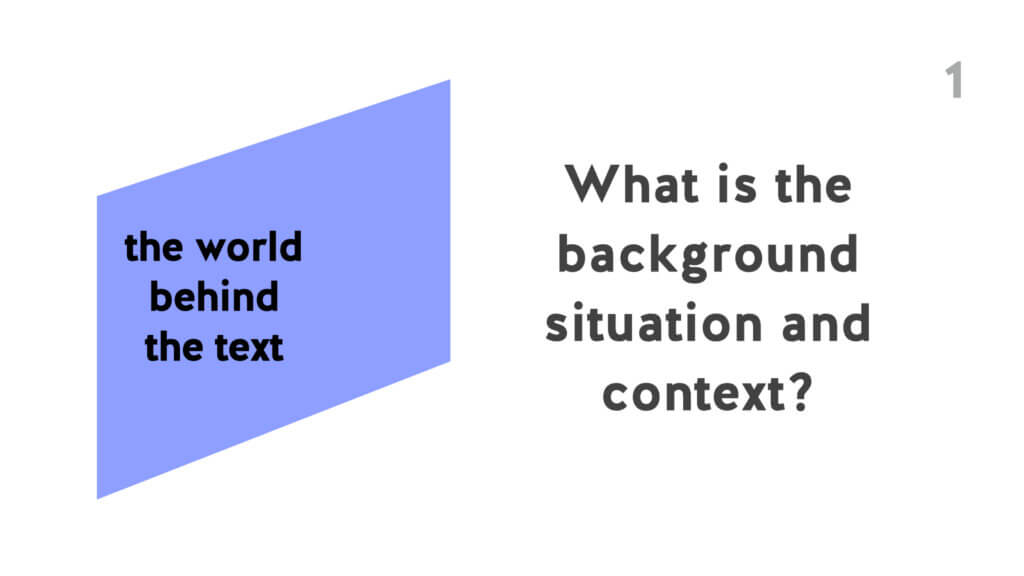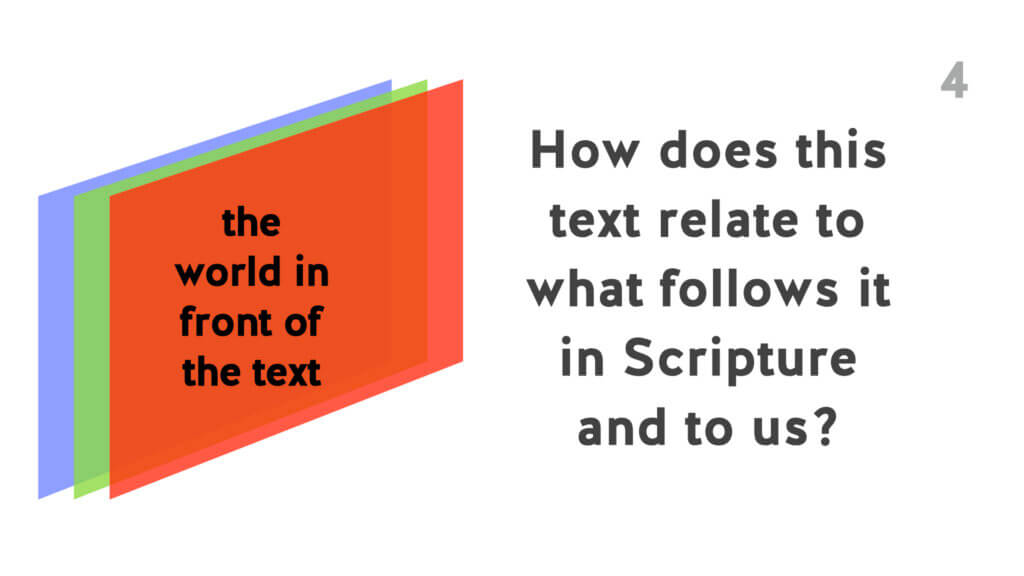If we want to understand and interpret a passage from the biblical prophetic literature, there are a few key questions we need to ask. Most of these are not specific to the prophets of the Old Testament/Hebrew Bible, but are basic matters of handling any Bible passage responsibly. Most people find they need to work harder on Old Testament texts as the setting and style is less familiar than the New Testament. And for many, that's even more true when it comes to the prophetic books. We may only have the vaguest idea about the historical context, we don't get many of the prophet's references to matters of religion, culture, or international politics, and the way they express themselves often feels very alien to us. So here are some pointers to help your thinking.


What is the background situation and the historical context of the passage? This is important for all Bible passages, not just those in the prophets, but you may feel less familiar with the worlds in which the First Covenant prophets operated. You can find much of what you need here simply by carefully reading the history books within the Hebrew Bible/Old Testament. For the prophets, the books of Kings and Chronicles are most immediately relevant, but you'll also need to be familiar with the earlier history from the Pentateuch to the books of Samuel.

What is really going on in the text? We need to do a great deal of work to understand any passage of the Bible on its own terms, rather than simply reading our assumptions into it.

There are two main aspects of this. First, how does this text relate to what follows it in Scripture? Second, how does it relate to us? We must do the previous two stages first: understand them in context (the world behind the text), read them well and understand them on their own terms (the world of the text). Then, as Walter Kaiser says, we must read them in a Christocentric way to put them in their full biblical context and apply them to us. He says:
Sound expository preaching always requires these three basic moves: from (1) determining the original meaning, to (2) the meaning in the context of the whole canon, to (3) the application of this meaning for our hearers today.
Greidanus, 1999, p. 231
There's a balancing act here. We must not read Christ back into the First Covenant texts, but we must read them in the light of Christ. We need to identify ways of legitimately talking about Christ from First Covenant texts in the canonical context of the New Covenant. If we don't do so, we are not reading the texts as Christian readers.
So as well as asking what the text reveals about God and his will, we also need to consider what it reveals about Christ. As well as asking what the text meant to its original audience(s), we need to ask what it means in the light of Christ? Greidanus gives 7 ways of relating First Covenant texts to Jesus, which I will write about in due course:
As Christian readers, we must see the texts through Christ first – understanding them from a Christocentric perspective. That will help us to see how the texts speak to us.
The prophets address the First Covenant people of God – a geopolitical, cultural, religious entity. Under the New Covenant, the people of God is the international church of Jesus Christ, comprising Gentiles who have been grafted into Abraham's family as well as Jews descended from him genetically. The prophets do not, in the first instance, challenge the world in which we live; they rebuke our unfaithfulness as God's people.
The promises which the prophets give are about Jesus first, then the Church as a whole, not us as individuals. The judgements they announce fell on First Covenant Israel/Judah, anticipating the full weight of God's judgement being borne by the Lord Jesus Christ. They further anticipate the final judgement, which is relevant both inside and outside the church. Those judgements come out of a theological vision of what God wants for his people – shalom and flourishing – so we need to look at how both promises of salvation and warnings of judgement ultimately point to the new creation.
Greidanus, S., 1999. Preaching Christ From the Old Testament : A Contemporary Hermeneutical Method. Grand Rapids, MI: Wm. B. Eerdmans.